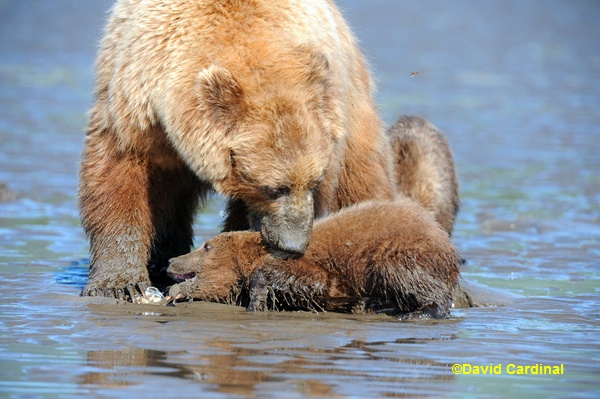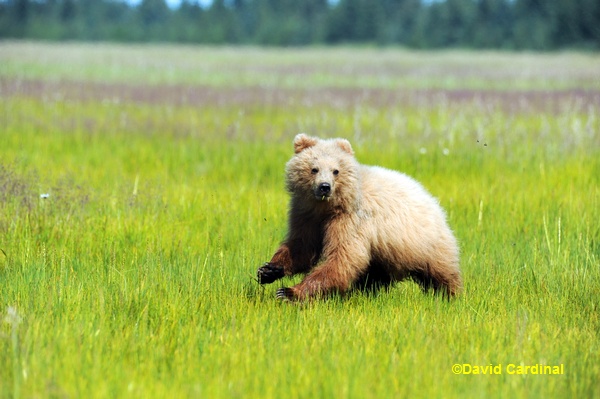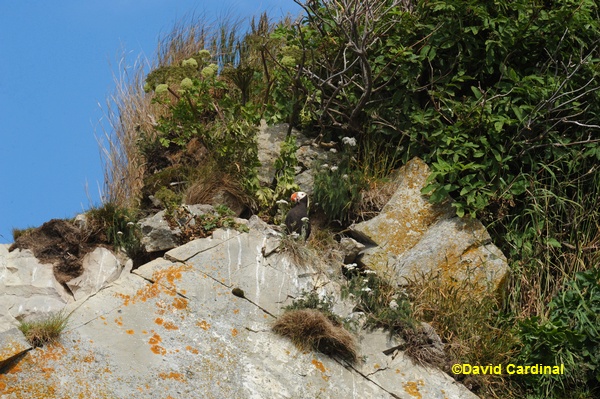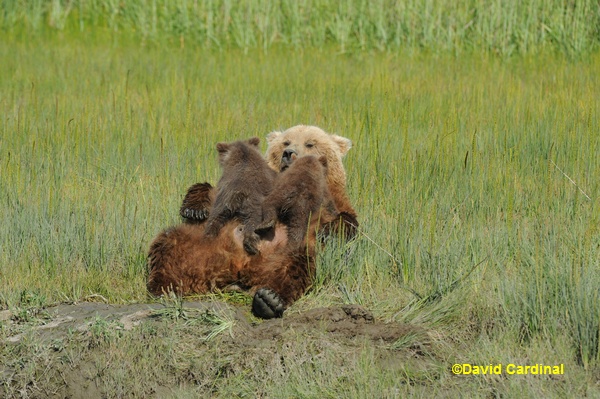- Photo Safaris
- Alaska Bears & Puffins World's best Alaskan Coastal Brown Bear photo experience. Small group size, idyllic location, deluxe lodging, and Puffins!
- Participant Guestbook & Testimonials Candid Feedback from our participants over the years from our photo safaris, tours and workshops. We don't think there is any better way to evaluate a possible trip or workshop than to find out what others thought.
- Custom Photo Tours, Safaris and Personal Instruction Over the years we've found that many of our clients & friends want to participate in one of our trips but the dates we've scheduled just don't work for them or they'd like a customized trip for their family or friends.
- Myanmar (Burma) Photo Tour Myanmar (Burma) Photo Tour December 2017 -- with Angkor Wat option
- Reviews Go hands-on
- Camera Reviews Hands-on with our favorite cameras
- Lens reviews Lenses tested
- Photo Accessories Reviews Reviews of useful Photo and Camera Accessories of interest to our readers
- Useful Tools & Gadgets Handy tools and gadgets we've found useful or essential in our work and want to share with you.
- What's In My Camera Bag The gear David Cardinal shoots with in the field and recommends, including bags and tools, and why
- Articles About photography
- Getting Started Some photography basics
- Travel photography lesson 1: Learning your camera Top skills you should learn before heading off on a trip
- Choosing a Colorspace Picking the right colorspace is essential for a proper workflow. We walk you through your options.
- Understanding Dynamic Range Understanding Dynamic Range
- Landscape Photography Tips from Yosemite Landscape Photography, It's All About Contrast
- Introduction to Shooting Raw Introduction to Raw Files and Raw Conversion by Dave Ryan
- Using Curves by Mike Russell Using Curves
- Copyright Registration Made Easy Copyright Registration Made Easy
- Guide to Image Resizing A Photographers' Guide to Image Resizing
- CCD Cleaning by Moose Peterson CCD Cleaning by Moose Peterson
- Profiling Your Printer Profiling Your Printer
- White Balance by Moose Peterson White Balance -- Are You RGB Savvy by Moose Peterson
- Photo Tips and Techniques Quick tips and pro tricks and techniques to rapidly improve your photography
- News Photo industry and related news and reviews from around the Internet, including from dpreview and CNET
- Getting Started Some photography basics
- Resources On the web
- My Camera Bag--What I Shoot With and Why The photo gear, travel equipment, clothing, bags and accessories that I shoot with and use and why.
- Datacolor Experts Blog Color gurus, including our own David Cardinal
- Amazon Affiliate Purchases made through this link help support our site and cost you absolutely nothing. Give it a try!
- Forums User to user
- Think Tank Photo Bags Intelligently designed photo bags that I love & rely on!
- Rent Lenses & Cameras Borrowlenses does a great job of providing timely services at a great price.
- Travel Insurance With the high cost of trips and possibility of medical issues abroad trip insurance is a must for peace of mind for overseas trips in particular.
- Moose Peterson's Site There isn't much that Moose doesn't know about nature and wildlife photography. You can't learn from anyone better.
- Journeys Unforgettable Africa Journeys Unforgettable -- Awesome African safari organizers. Let them know we sent you!
- Agoda International discounted hotel booking through Agoda
- Cardinal Photo Products on Zazzle A fun selection of great gift products made from a few of our favorite images.
- David Tobie's Gallery Innovative & creative art from the guy who knows more about color than nearly anyone else
- Galleries Our favorite images
NEW Sigma 120-300mm f/2.8 with Stabilization: Is it a Nikon 200-400mm and Canon 100-400mm Killer?
NEW Sigma 120-300mm f/2.8 with Stabilization: Is it a Nikon 200-400mm and Canon 100-400mm Killer?
Submitted by David Cardinal on Sat, 07/23/2011 - 11:30
 The Nikon 200-400mm f/4 AF-S VR Lens has become a legend among wildlife photographers—especially those who shoot from vehicles on safari. I personally know of several pros who have switched from Canon to Nikon just to take advantage of the killer combination of a D3, D3S or D700 with one. The second version upgraded the VR system on the lens but it didn’t address its three remaining shortcomings: f/4 maximum aperture, mediocre auto-focus speed and physical size and weight. Now along comes a major re-design of the venerable Sigma 120-300mm f/2.8 HSM EX APO lens with image stabilization (OS), “splash proofing” and low dispersion glass added. Read on to find out if it knocks the Nikon off its throne in my field test…
The Nikon 200-400mm f/4 AF-S VR Lens has become a legend among wildlife photographers—especially those who shoot from vehicles on safari. I personally know of several pros who have switched from Canon to Nikon just to take advantage of the killer combination of a D3, D3S or D700 with one. The second version upgraded the VR system on the lens but it didn’t address its three remaining shortcomings: f/4 maximum aperture, mediocre auto-focus speed and physical size and weight. Now along comes a major re-design of the venerable Sigma 120-300mm f/2.8 HSM EX APO lens with image stabilization (OS), “splash proofing” and low dispersion glass added. Read on to find out if it knocks the Nikon off its throne in my field test…
The first thing I noticed about the new Sigma was its size. Laid side by side with the Nikon it is noticeably smaller and it is almost 15% lighter (6.5 lbs. instead of 7.4 lbs. for the Nikon) Hooray of course since not only would it be easier on my shoulder and to hand hold but it gives me more room in my camera bag. Unlike the Nikon it also takes front filters (instead of drop-in) but they are quite large (105mm) so it’s not likely you’ll have any sitting around you can re-use. And you can’t miss the fact that the Sigma is less than half the price of the Nikon 200-400 (if you can even find one in stock).
Auto-Focus Speed & Stabilization

But of course ergonomics are nothing without performance and image quality. I was delighted to see that Sigma has improved on the already snappy AF speed of their earlier version of the Sigma 120-300 and the new one is incredibly quick to focus—even with a 1.4x Teleconverter. Sequences like this one of a mother Brown Bear disciplining her cub were easy to rip off quickly with the subject in sharp focus.

The OS (optical stabilization) system worked excellently. I find it difficult to test stabilization systems with any great precision since each situation is different, but it definitely allowed me to use some slow shutter speeds both hand held and off a tripod.
Image Quality

Bears are a great subject for testing lens sharpness. Capturing the fine detail of every hair requires a combination of a great lens, good camera body, some solid technique and clear air. In images like this one the combination pays off handsomely.
In two weeks of using the Sigma for over a thousand images a day I was blown away by the images. They were razor sharp throughout the focal range and at both close and long distances—to over-use a catchphrase I found them “dripping with detail.” The results were quite good even with the Sigma 1.4 Teleconverter and acceptable with the Sigma 2x Teleconverter, although I’d guess that if Sigma updated their Teleconverters the way Nikon and Canon have the TC results could be even better.

This image was shot with the Sigma 2x Teleconverter as there was no way to get closer to the Tufted Puffin with fish. Zoomed in the Puffin image still has quite respectable detail and reasonable sharpness.
I also enjoyed the image contrast and the smooth out of focus areas (e.g. “bokeh”). I really couldn’t find fault with image quality and if I had to grab either the Sigma for the Nikon for a project based on image sharpness alone I’d pick up the Sigma. That’s saying quite a lot given how much I like my Nikon 200-400 and the fact that the Nikon costs twice as much!
Test Shots with the Sigma 120-300 and Nikon 200-400
I did some comparison shots with the Sigma and the Nikon 200-400 wide open and at f/5.6 at both ends of their zoom ranges. Aside from a slight light fall-off in the Sigma when shooting wide-open at f/2.8 there wasn’t much to choose between them but I’ve uploaded slightly reduced size versions so you can see for yourself:
Compared To The Canon 100-400mm Lens

Many samples of the Canon 100-400mm Lens are soft past 300mm (although some are sharp throughout the range) so especially for those users the Sigma 120-300 will be quite a nice upgrade.
If you can afford the higher price of the 120-300mm Sigma and the heftier footprint it is a no-brainer upgrade from the Canon 100-400mm Lens for Canon shooters. It is dramatically faster, sharper and with a Teleconverter has every bit of the same length. Plus it is internal focusing and doesn’t have the awkward push-pull “dust magnet” of the 100-400. It is definitely worth considering for anyone looking for their next step up from the somewhat long in the tooth Canon 100-400mm Lens.
Room For Improvement
There are two areas I’d really like to see Sigma address in the design of this lens. First is the tripod collar. Like with the Sigma 120-400 it is just plain too close to the camera for my taste (and my hand size) when using it with a Wimberly Sidekick, especially with a rain cover on the camera.
Eventually I figured out how to give myself more room by mounting my lens plate with the lip towards the front of the lens and felt pretty good about the result but I’d rather not have to sweat details like that to use a lens.
The Sigma uses a traditional but not optimal design for removal of the lens collar with several small notches which fit posts at one place in the lens rotation to attach the collar. This is unreliable if you are using a Sidekick as as an inadvertent rotation of the camera can cause the camera and lens to slip forward out of the collar (because the removal point is near the orientation of the lens when a Sidekick is placed on the right away from the lens switches). This happened to me every couple days in the field. I’d much rather see a removable foot like Nikon is using on many of its new lenses. The second feature missing is some type of M/A mode for hybrid automatic and manual focus—which has made the Nikon AF-S telephotos such a nice upgrade on their older siblings.
The Sigma 120-300 also vignettes slightly when used with the Sigma 1.4x Teleconverter at the long end. This may be more the fault of the TC (which pre-dates the widespread adoption of full frame digital cameras) than the lens. It also seemed like the stabilization on the Sigma uses more battery power than the Nikon, but I didn’t have a good way to test that formally. The light fall-off is simple to remove when first importing the raw file but without correction it is definitely visible.
On the bright side the Sigma focuses down to a pretty amazing 4.9 feet, compared to the 6.6 feet of the Nikon. That may not seem like much but when you’ve finally gotten in position with a wildlife subject there is nothing worse than it coming too close to focus!
Full Resolution Sample Images
Since of course it is hard to judge a lens from the low resolution images shown in a review I've also posted full resolution JPEGs generated from some of the sample images in this review. You can view them by clicking on these links. Keep in mind these are copyrighted images so they are not to be used other than for your evaluation of these lenses without our written consent: These images have been post-processed only to convert them to sRGB and add a small watermark: Tufted Puffin 2x TC Example, Brown Bear Nursing Cubs Example, Alaskan Brown Bear Cub Sample Image.
Conclusion:
Should You Buy The Sigma 120-300mm f/2.8 HSM EX OS APO Lens?
If you want a no compromise safari lens and especially if you don’t want to spend the $7,000 and carry around 8 pounds with the Nikon 200-400mm f/4 Lens the Sigma is for you! Or if you want to upgrade from the Canon 100-400 or the Nikon 80-400 or the Nikon 70-300 the Sigma is also a great choice.
However if you shoot with a Wimberly Sidekick (like I do) or like to move your lens back and forth in the tripod collar you’ll need to pay attention to usability. Buying the lens from a reputable vendor like B&H who will give you a chance to return it if it doesn’t work out may be a wise decision in that case.
Purchasing
All the lenses in this review are available from B&H so if you'd like to help our free photo information site and reviews like this one please consider buying through our links to them if you decide to purchase:
Reference: Lens Specifications (Nikon Mount Version)
Focal Length: 120 - 300 mm
Aperture:
Maximum: f/2.8
Minimum: f/22
Format Compatibility: Nikon FX/35mm Film & Nikon DX
Angle of View: 20.4° - 8.2°
Minimum Focus Distance: 4.9' (1.49 m)
Magnification: 0.12x
Maximum Reproduction Ratio: 1:8.1
Groups/Elements: 18/23
Diaphragm Blades: 9
Image Stabilization: Yes
Autofocus: Yes
Tripod Collar: Yes
Filter Thread: 105 mm
Dimensions (DxL): Approx. 5.0 x 11.4" (12.70 x 28.96cm)
Weight: 6.50 lb (2.95kg) -- NOTE: I measured it at 6.8 lbs with lens collar & a Wimberly plate.
- Log in to post comments


